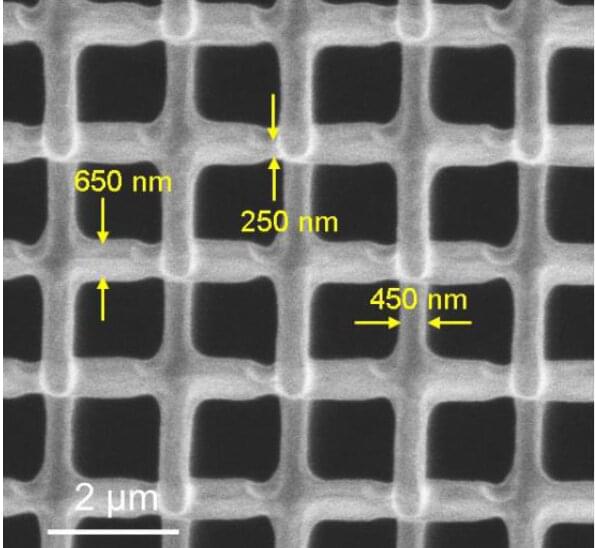A newly created nano-architected material exhibits a property that previously was just theoretically possible: it can refract light backward, regardless of the angle at which the light strikes the material.
This property is known as negative refraction and it means that the refractive index—the speed that light can travel through a given material—is negative across a portion of the electromagnetic spectrum at all angles.
Refraction is a common property in materials; think of the way a straw in a glass of water appears shifted to the side, or the way lenses in eyeglasses focus light. But negative refraction does not just involve shifting light a few degrees to one side. Rather, the light is sent in an angle completely opposite from the one at which it entered the material. This has not been observed in nature but, beginning in the 1960s, was theorized to occur in so-called artificially periodic materials—that is, materials constructed to have a specific structural pattern. Only now have fabrication processes have caught up to theory to make negative refraction a reality.









Comments are closed.